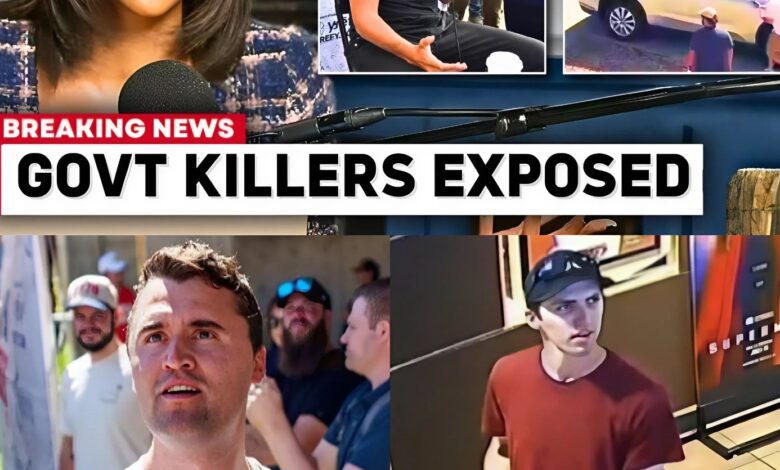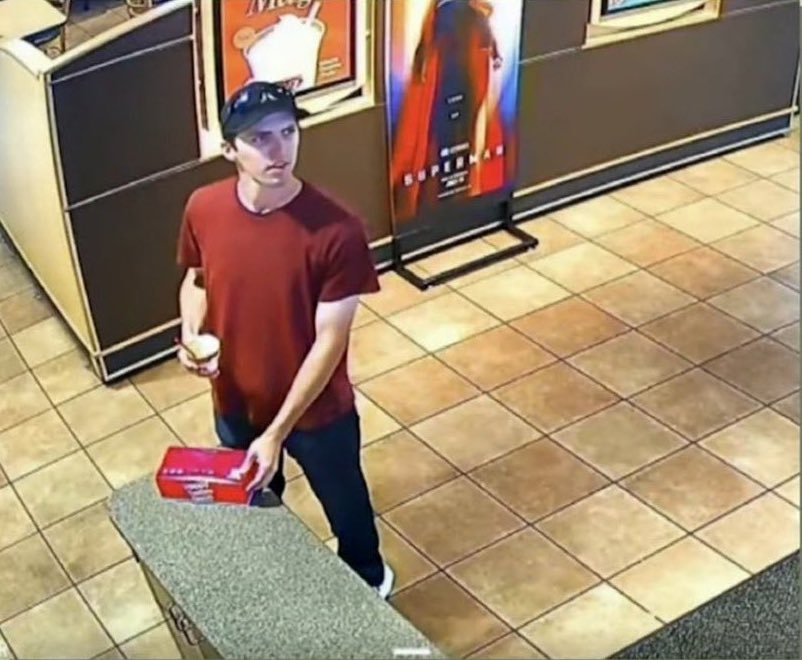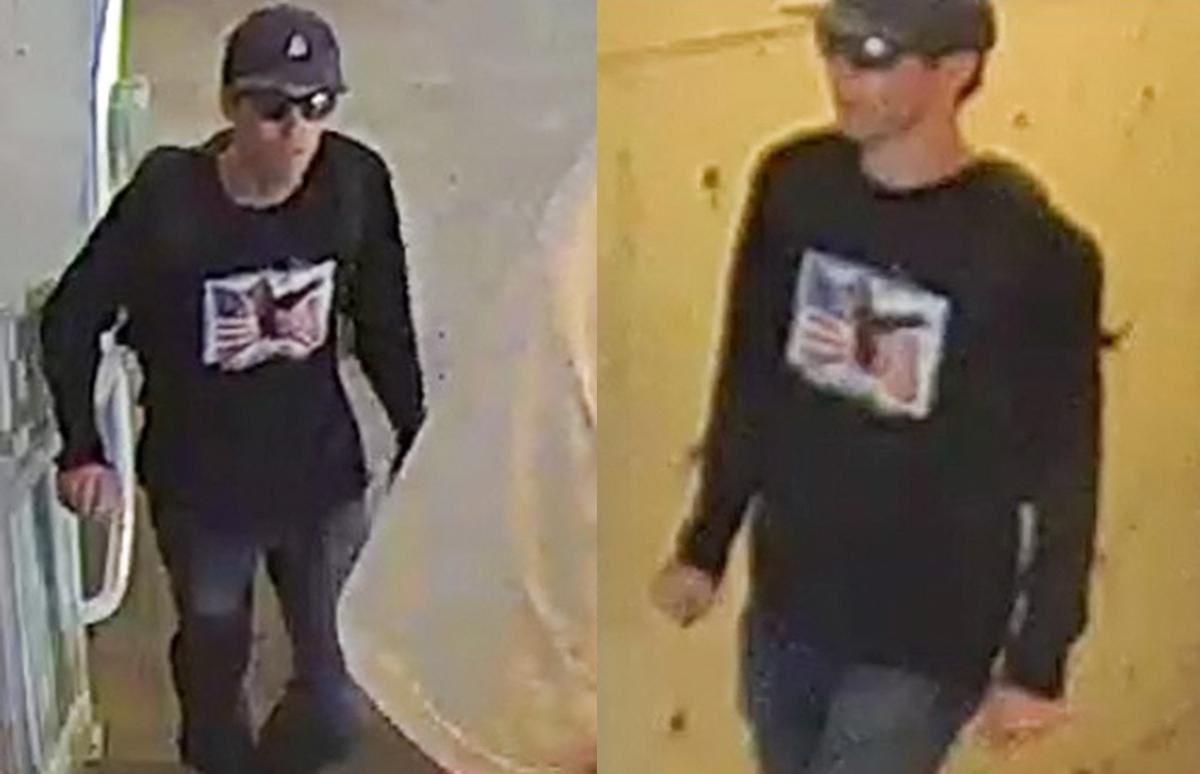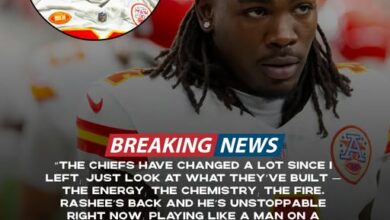TQ. A photo, a timeline, and one haunting question: what kind of man buys ice cream right after a murder?

The photo looks harmless enough — a simple vanilla ice cream cone, half-melted under the bright lights of a Dairy Queen in Dayton, Ohio. Yet investigators say it was taken exactly seventeen minutes after a triple shooting that left three people dead and a community shattered.
Discover more
Best fashion retailers
Vehicle
vehicle
Car dealership
Portable speakers
Car
TV
snake
Video
Snake
The man holding the cone — Tyler Robinson, 28 — is now the face of that horror. Police call him a domestic extremist. Prosecutors insist the evidence is airtight. But commentator Candace Owens isn’t buying it.
“This isn’t about defending a killer,” she said on her show last week. “It’s about defending the truth — and the truth doesn’t add up.”
Discover more
Car
Television
car
TV
Science
cars
Family games
automotive
Cars
science
Her words have torn open a wound the authorities thought was sealed. Because beneath the tidy headlines and the televised confession, a darker, more complicated picture is beginning to emerge — one filled with conflicting timelines, missing evidence, and a firearm that should never have existed in the first place.
And at the center of it all sits that one haunting question:
Was the wrong man put behind bars — to protect someone else?

The Impossible Timeline
According to police, the shootings occurred at 6:13 p.m. outside a small grocery store on Franklin Avenue. Witnesses described a man in a dark hoodie fleeing the scene on foot.
Yet by 6:30 p.m., security footage from a Dairy Queen less than two miles away captured Robinson casually ordering ice cream, chatting with staff, and paying in cash. He stayed for nearly six minutes — smiling, laughing, behaving with the calm of an ordinary customer.
By 6:41 p.m., his phone pinged near his home, located another four miles away.
For investigators, that left just twenty-eight minutes between the attack, the ice cream, and his return home — a window of time that seems logistically impossible.
Owens seized on the contradiction.
“Are we seriously supposed to believe that a man could murder three people in cold blood, flee undetected, walk into a Dairy Queen, order dessert, and chat with the cashier as if nothing happened — all in under half an hour?”
Her question echoes a growing chorus of skepticism. Behavioral experts say the pattern defies the psychology of post-crime behavior.
Dr. Marcus Feldman, a forensic psychologist at Johns Hopkins, notes that “violent offenders typically display signs of agitation, hypervigilance, or panic immediately after an attack.”
Calmly buying an ice cream cone, he adds, “isn’t just unlikely — it’s counter-intuitive.”
The prosecution argues that Robinson might have staged the Dairy Queen alibi, but the timestamped metadata and three eyewitness confirmations make that theory tenuous.
In other words: if the photo is real — and the time is correct — the timeline collapses.

The Confession That Raised More Questions
Authorities claim Robinson confessed after nine hours of interrogation. Yet, the video of that confession has never been made public.
Owens calls it “the most suspicious silence of all.”
Defense filings show Robinson requested an attorney multiple times during questioning but was denied access for the first six hours — a clear violation of his constitutional rights.
Attorney Michael Pruitt, who now represents Robinson, says the confession was “a product of exhaustion and intimidation.”
“They broke him down psychologically,” Pruitt told reporters. “He’d been awake for over twenty-four hours, deprived of food, and told that his family could be charged as accomplices if he didn’t cooperate.”
Family games
When he finally confessed, Pruitt argues, Robinson was “parroting back” details fed to him by investigators — details that didn’t match the physical evidence.
Even the alleged murder weapon — a Sig Sauer P320 — raises serious doubts about the integrity of the case.
The Gun That Shouldn’t Exist
According to court records, the Sig Sauer found at the scene was traced to a federal evidence locker in Bridgeport, Connecticut — nearly 700 miles away.
The weapon, serial number FDX-4475, had been listed as “destroyed” after an unrelated investigation in 2022. Yet somehow, it resurfaced in Ohio two years later, used in a crime supposedly committed by a man with no history of violence, no criminal record, and no known access to restricted firearms.
When Owens presented the documentation live on air, she didn’t mince words:
“You’re telling me a gun marked as destroyed magically reappears, kills three people, and ends up linked to an innocent man — and no one at the FBI can explain how?”

Her team contacted the Bureau for comment. The response? A single line: “The matter is under internal review.”
That terse reply only deepened suspicions — especially after it emerged that FBI agents from Connecticut arrived in Dayton within hours of the shooting, well before the suspect’s name was released.
Why send a specialized team from another state? Why that division? And how did they know where to go?
Former federal investigator Thomas Keane, speaking off record, offered a chilling possibility: “When a case draws agents from outside jurisdiction before local charges are even filed, it usually means the Bureau already had eyes on someone — or something — connected to that event.”
If true, that would suggest the shooting wasn’t a random act — but part of a much larger puzzle.
The Witness Who Disappeared
Adding to the mystery is a woman named Angela Moreno, who lived near the crime scene and claimed she saw the shooter.
Her initial description, given to local reporters, painted a very different picture:
“He was taller, heavyset, wearing a green jacket — definitely not the man they showed on TV.”
Yet, Moreno’s name does not appear in the final police report or the prosecution’s case file. Within two weeks, she had moved out of state. Calls to her listed number go unanswered.
A retired police officer familiar with the investigation told the Dayton Ledger that Moreno’s statement “complicated things” and was “probably considered unreliable.” But to Owens, that explanation reeks of selective editing.
“They didn’t dismiss her,” she said. “They erased her. Because her story didn’t fit the script.”
Patterns of Silence
Owens’s allegations of a “massive federal cover-up” may sound incendiary, but they follow a familiar pattern in controversial cases — quick federal involvement, sealed evidence, restricted media access, and a suspect who suddenly “confesses” under unclear circumstances.
Skeptics point to the FBI’s history of mishandling high-profile cases: from missing surveillance footage to misplaced ballistic reports, to premature declarations of “lone-gunman” narratives.
The more details emerge, the more Robinson’s case appears to fit that mold — a case tied together by weak threads and bureaucratic convenience.
“If there’s one thing institutions fear more than crime,” Owens said, “it’s exposure.”
:max_bytes(150000):strip_icc():focal(740x331:742x333)/tyler-robinson-charlie-kirk2-91225-f1eb8093d08d431586d4a92eadebbbc4.jpg)
She argues that the Bureau’s rush to control the narrative wasn’t about protecting the public — it was about protecting itself.
The Psychological Contradiction
Even setting aside the procedural inconsistencies, Robinson’s profile simply doesn’t match that of a calculated murderer.
Friends describe him as quiet, methodical, and conflict-averse — the kind of man who apologized if his shopping cart bumped yours. He worked double shifts, rarely posted online, and had no known ties to extremist groups.
The day before the attack, his social media showed him sharing a photo of his niece’s birthday cake with the caption: “Best part of life is seeing her smile.”
The next evening, police say he transformed into a remorseless killer.
Psychological experts find such an abrupt shift hard to reconcile without clear motive or triggering trauma. “Personality doesn’t pivot overnight,” explains Dr. Feldman. “If he truly committed the act, there would be a trail of escalation — anger, obsession, preparation. There’s none of that here.”
The Ice Cream and the Cover-Up
So why would the system close ranks so quickly?
Owens’s theory is explosive: that the real shooter was an informant — someone under federal protection — and Robinson was the perfect fall guy. The inexplicable Connecticut link, the erased witness, and the fast-tracked confession all serve one purpose: containment.
“Sometimes,” she said, “justice isn’t about finding who’s guilty — it’s about protecting who’s useful.”
No mainstream outlet has corroborated that claim, but the lack of transparency from law enforcement gives it traction. Every unanswered question fuels speculation, and every inconsistency becomes a symbol of systemic rot.
Beyond the Crime: The Erosion of Trust
Whether or not Robinson is innocent, the case underscores a broader crisis — one of trust.
When timelines break, when evidence vanishes, when agencies investigate themselves behind closed doors, the public doesn’t just doubt the verdict; it doubts the entire system meant to uphold it.
The photo of Robinson eating ice cream isn’t just a piece of evidence — it’s a metaphor for that dissonance. A moment of ordinary human calm clashing violently with the monstrous image painted by prosecutors.

Was it an alibi? A coincidence? Or the quiet innocence of a man who didn’t yet know his life was about to end in handcuffs?
Conclusion: The Man, the Cone, and the Lie
Seventeen minutes. That’s all it took for the story to fracture.
Between the crime scene and the Dairy Queen lies a void filled with contradictions — a missing witness, a reappearing gun, a confession behind closed doors.
If Tyler Robinson is guilty, the evidence should speak for itself. If he’s innocent, then someone powerful has crafted one of the most chilling cover-ups in recent memory.
Either way, the truth melted — just like that ice cream cone.
And until someone dares to face the heat, the question will haunt this case forever:
Who really pulled the trigger — and who is the system trying to protect?



